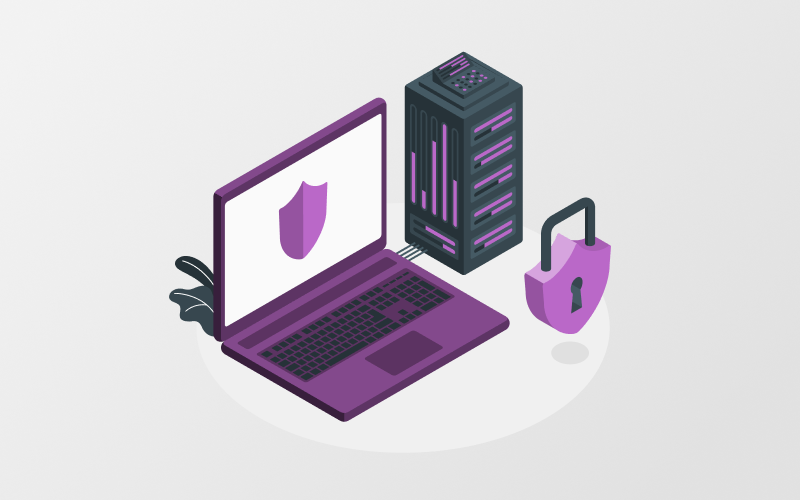
Staying relevant in today’s fast-paced and fiercely competitive market is not an easy task, so it’s obvious that organizations should take all the help they can get. Nowadays, most companies rely on all sorts of third-party software solutions to automate their repetitive process and take the load off.
While these tools can certainly be helpful and beneficial, there is an element of risk that they impose as well. It’s no secret that all software is vulnerable and using these kinds of solutions makes your system more prone to a cyber-attack than before. Therefore using a vulnerability management solution is highly recommended and advisable.
What is Vulnerability Management?
The process of identifying, evaluating, and addressing the current and potential vulnerabilities in an IT environment is called vulnerability management. It is a critical part of mitigating risks and eliminating possible threats in the IT infrastructure in an organization. Namely, vulnerability management is a process that requires a comprehensive view of all the vulnerabilities in a system, both small and big.
In order for the security teams to properly identify and evaluate the risks, they need a high level of visibility. For this reason, managing vulnerabilities is usually done with the help of an automated tool, which provides the necessary information to make the right decisions. This is generally done in the 3 following steps:
Identifying
By using a vulnerability scanner, you will be able to detect all of the vulnerabilities in your network. However, to properly identify vulnerabilities in your applications, it is highly recommended to use multiple security testing tools. Namely, this will probably be the most tedious step in vulnerability management, as it requires thorough work, though it is essential to identify all vulnerabilities before you move to the next step and evaluate them.
Evaluating
Most vulnerability management tools usually come with a relative risk rating which can be useful for the overall vulnerability evaluation. Yet, there are other factors you need to consider when evaluating vulnerabilities in your system.
Namely, you need to think about the likelihood of a vulnerability being exploited and the impact it might have as well. It is important to note that sometimes you may have identified a so-called “false positive” vulnerability. To validate it, you will need to perform a penetration test.
Addressing
After the process of evaluating all the minor & major vulnerabilities in the system has finished, you need to prioritize these vulnerabilities and the risks that come with them – and address them accordingly. The software solution you are using to manage them will usually suggest a remediation technique for each one. You need to cooperate with your security team and system administrators to develop a plan for addressing the vulnerabilities. Generally, you can take one of the three following actions:
- Remediating the vulnerability – This usually consists of patching, correcting, or replacing the code containing the vulnerability in order to entirely eliminate the chance of it being exploited.
- Mitigating the vulnerability – Some security experts may perform this by making subtle changes to reduce the likelihood, or in some cases, the impact of a vulnerability if it gets exploited. However, it shouldn’t be used as a long-term solution.
- Doing nothing – Take no action to remediate the vulnerability and accept it. This is only done when the exploitation of the vulnerability & the price that comes with it costs less than remediating it. This action is only used in situations where there’s not much to lose.
Finding the Best Vulnerability Management Tools
While most vulnerability management tools offer a similar set of features and qualities, there are a few that stand out and can only be found in the best software solutions. Consider looking for the following features:
- Automated scanning and alerting.
- Central management of scanners and agents.
- A clear presentation of all vulnerabilities in a detailed dashboard.
- Overtime & automatic tracking of vulnerabilities.
- Internal network scanning.
- Reporting which satisfies the compliance criteria.
- Deep scanning for security configurations.
- Automated strengthening of the security controls.
The good news is almost all of the premium vulnerability management tools offer a free trial which you can use to test them out and choose the one that is the most suitable for you & your organization.
Conclusion
Every security team aims to eliminate all of the vulnerabilities and risks within their IT environment. While there are many techniques and methods to protect it, the truth is that, without the help of a software solution, this goal is incredibly difficult to reach, and the process can cause frustration in your organization.
Vulnerability management tools can ease the process and also provide you with the needed clarity to properly prioritize and address your exposures. They will allow your security team to take the right actions to prevent cyber-attacks and take the security of your organization to a new level.
Related: 8 Cybersecurity Best Practices for Enterprises
Cover Image: Technology illustrations by Storyset
